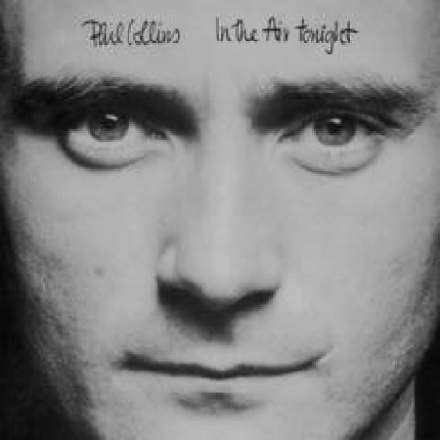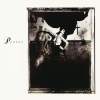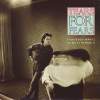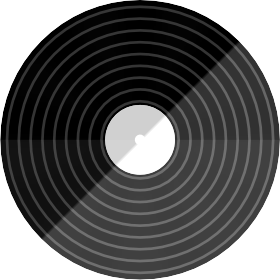
Like Cher’s 'Believe', this is one of those few records where the headline production stunt seems to have eclipsed almost all other aspects of the song in people’s minds. Sure, the famous drum sound that arrives with the final choruses undeniably deserves its place in history, standing iconically at the watershed between two musical decades, but there’s not much to say about it from a technical perspective beyond what producer Hugh Padgham has already revealed in interviews such as these from Home & Studio Recording (January 1985), Music Technology (April 1987), Sound On Sound (May 1988), and Mix Magazine (January 2005). However, it is worth considering what isn’t there, namely any hi-hat or cymbal parts. Given the gating going on, they’d presumably have had to have been overlayed as separate overdubs if Collins had wanted them, but it’s great that they weren’t, because their absence highlights the weirdness of the sporadic kick and snare pattern he’s playing. Without a hi-hat chugging along filling in all the rhythmic subdivisions, the pattern feels much less predictable, so it holds the listener’s active attention much longer.
Another thing that’s missing as far as most modern listeners are concerned is the drums overdub that was overlaid on the verses of both the song’s original single release and its original music video. Apparently, the record-company insisted at the eleventh hour that the single should have a clear backbeat from the outset, so Collins recorded an extra drum part alongside the album master tape at the last minute to create the single version. With hindsight, this executive crisis of confidence clearly undermines the impact of the ‘magic break’, which might explain why the Collins camp seem to have gone to such lengths since then to cast the album version as the ‘definitive classic’, rather than the mix that actually rocketed him to solo stardom via radio, Top Of The Pops, and MTV back in 1981. For instance, at time of writing, I couldn’t find the original single version at all on Amazon Music, iTunes, or Spotify, despite the ready availability of the album version, various officially sanctioned live recordings and remixes, and even the song’s initial demo! And now, with all the buzz surrounding the Williams twins’ recent viral reaction video, the airbrushing is pretty much complete, Tim & Fred’s selection of the album version constituting an implicit endorsement of its primacy in the public consciousness.
Putting aside those drums, though, what impresses me most about this song is the second verse’s lead line, which has remarkably little in common with the first verse’s. Although both use similar registers in similar bars for the most part, there’s actually very little melodic commonality at all, with the exception of the final three bars (“wipe off that grin / I know where you’ve been / it’s all been a pack of lies” at 2:01-2:09 and “hurt doesn’t show / but the pain still grows / it’s no stranger to you and me” at 3:32-3:39). I also love the way the phrase lengths keep taking you by surprise – for example the abrupt “ever met” at 3:17, the extended “but I know the reason why you keep your silence up”, and the expectation-defying “how could I ever forget it’s the first time” (the first phrase that doesn’t start with a simple anacrusis landing on the downbeat of the following bar).
But in addition, Collins (as you might expect of a drummer with such an established prog-rock pedigree) plays some intriguing rhythmic games with his vocal stress patterns besides. The opening of verse two is probably the most striking, where the natural speech stresses on the first and third syllables of “I remember” are first placed on the beat at 3:01, but then pulled off the beat when they’re repeated a bar later at 3:04. When combined with the genuinely attention-grabbing reverse-envelope vocoder spot effect, this distinctly unsettling rhythmic manoeuvre really drags you back into the vocal lyric after the preceding chorus. And a similar device is used again when “the first time” places its “first” on beat one at 3:12, but then “the last time” puts its “last” on the second beat of the following bar at 3:15.
And, speaking of rhythm, in one of those aforementioned interviews, Hugh Padgham expressed some regret about the fact that the echoes on the verse words “worry”, “met”, and “up” (at 3:06, 3:18, and 3:27 respectively), and indeed on all the chorus line-endings, are a bit slower than tempo-sync’ed. But I have to say it doesn’t bother me at all – if anything, in fact, I think it’s an advantage in this case. You see, when echoes are strictly tempo-synced they tend to blend less obtrusively into the backing track by nature, whereas in this track they stick out more by virtue of their lack of sync, and that simply makes them a stronger artistic statement, in my opinion. Yes, you could say thay make the groove drag, but honestly does that matter here before the main drums entry? And when the drums do eventually arrive, they’re so incredibly loud in the balance that a lagging delay makes no appreciable difference to their sense of rhythmic drive.
OK, I give in! Here are a couple more tidbits about those final drums… Firstly, notice how the opening fill isn’t just a series of one-two tom hits, but there’s also a kick hit between each pair, and I think that’s crucial to the fill’s sense of muscular impetus. And, secondly, I really like the way the vestige of off-beat drum-machine hi-hat you can hear playing behind the main drums at places like 3:48 almost makes those gaps in the drum part more empty, rather than less. It’s almost like a trace of a hi-hat that’s been removed, rather than just a space where a hi-hat never existed – and absence of something, rather than just a nothing, if that makes any sense!










